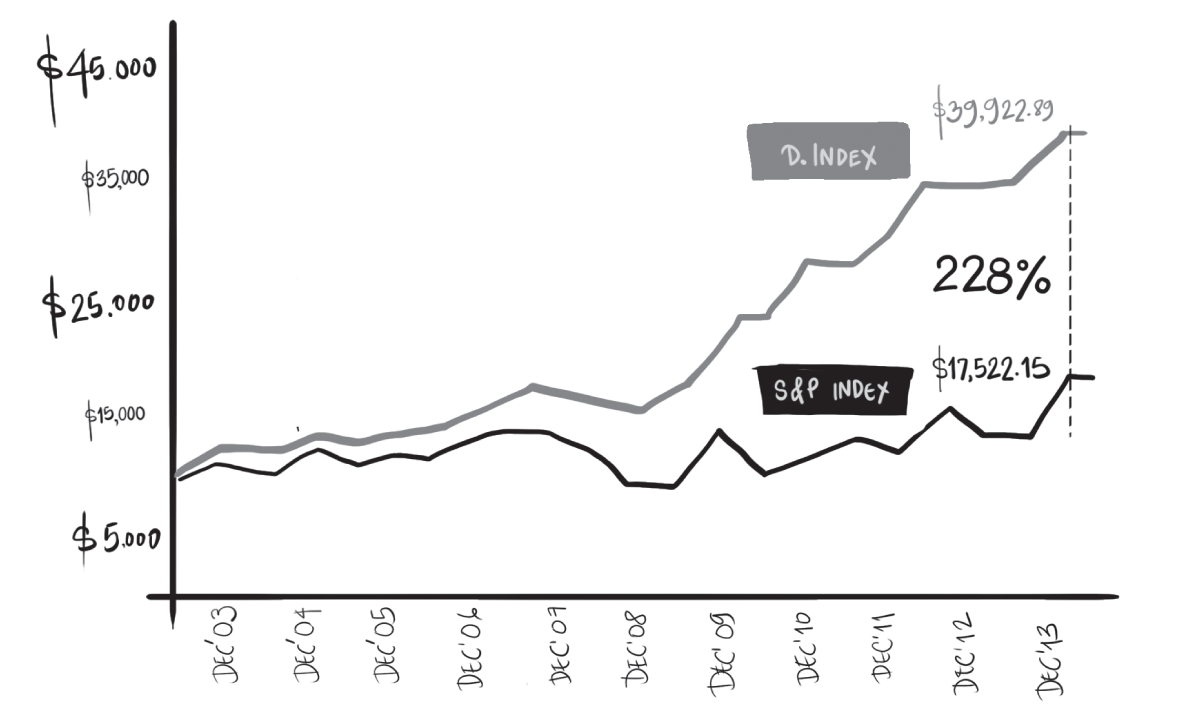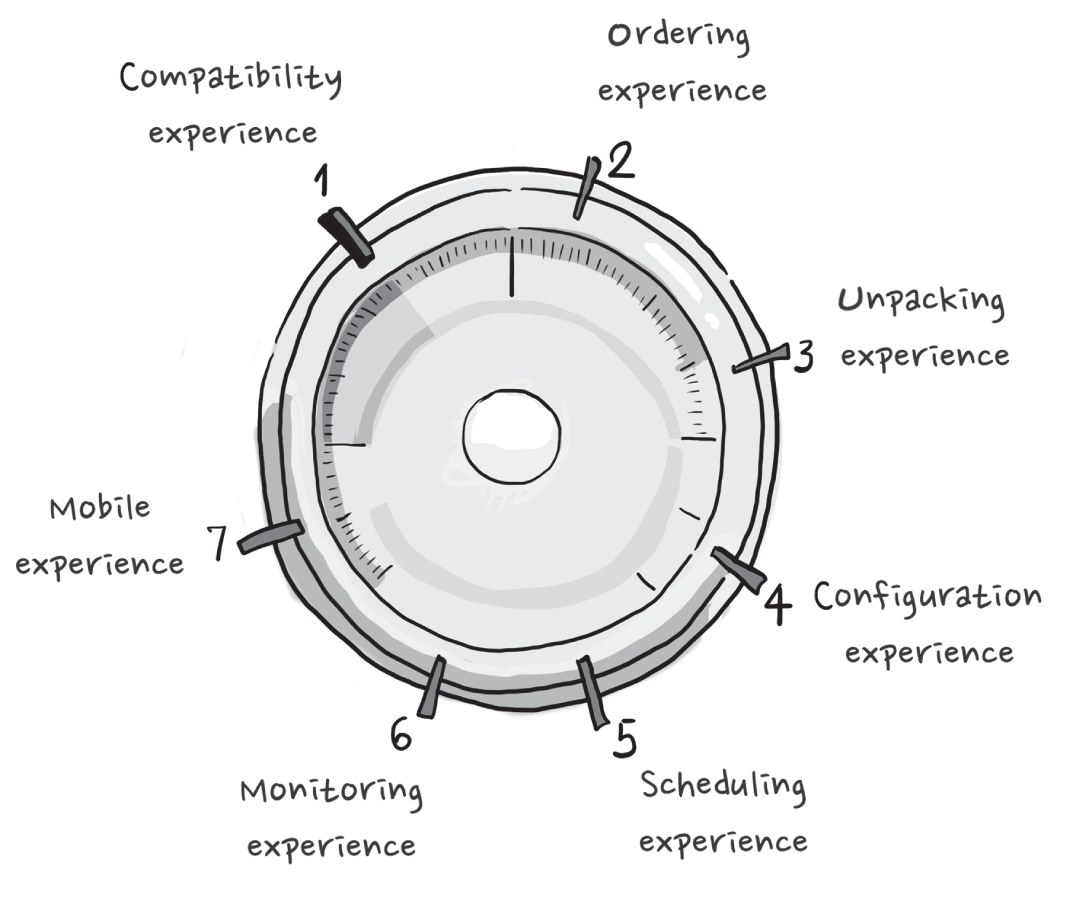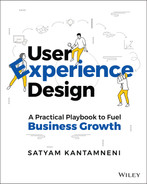CHAPTER 02
INTRODUCTION: Merging roles of business, technology, and design
A study by Design Management Institute (DMI) found a 228% differential between design‐centric companies and the S&P 500 Index. Corporations that made the list include Apple, Coca‐Cola, Ford, Herman‐Miller, IBM, Intuit, Newell‐Rubbermaid, Procter & Gamble, Starbucks, Starwood, Steelcase, Target, Walt Disney, Whirlpool, and Nike.
In a separate 2018 research study of the business value of design by McKinsey, the data also showed that top design‐centric companies were outperforming their competition by as much as a 2X multiple.

DESIGN MANAGEMENT INSTITUTE: DESIGN VALUE INDEX
At the same time, the beginning of this millennium brought technology and digital systems front and center in people’s work and life. It’s not surprising that eight of the 10 most valuable companies in the world today are technology companies. Technology is revolutionizing everything, and the world is getting rapidly digitized. Can the same emphasis on design continue to propel organizations forward? The answer is: It depends.
An updated playbook is needed to merge the dynamic nature of technology with traditional design practices. Differentiated digital experiences that are created when digital tools are built and deployed thoughtfully by user‐centric design can yield a market share gain between 1 and 5 percentage points. This data is from a 2019 McKinsey report detailing various digital growth strategies and how industrial companies can sustainably outgrow their peers. To clarify, we’re talking percentage points, not basis points (1/100th of a percentage), so this can easily convert into millions or even billions of dollars in business value.
Differentiated digital experiences don’t just magically happen. They must be deliberately designed. And organizations that fail to recognize this are not playing to win.
It’s not a fluke that digital companies such as Apple, Amazon, Uber, Nest, and Airbnb are so successful in generating business value. They understand and harness the union of technology and experience design to fuel growth. They are category leaders not just because they have the best technology but rather because they understand their users and create awesome experiences for them each and every time.
The Nest thermostat is a case study in the power of a superior digital experience: In just four years, the company leveraged that competitive advantage to build a $3.2 billion business that Google acquired in 2014. Not only did they build a beautiful, well‐designed physical thermostat, but they also designed the multiple user experiences that went with it: the ordering experience, the unpacking experience, the installation experience, the configuration experience, the scheduling experience, the monitoring experience, and the mobile experience. Again this value was created by deliberate user‐centered design.

Even though organizations and leaders understand the power of designing differentiated digital experiences, it is fairly evident in my two decades of experience (the majority of it leading and supporting organizations in Silicon Valley) that most are not able to leverage this to fuel business growth.
There are different reasons and challenges, and my goal (via this book) is to unpack them and provide a mindful framework for business leaders, design leaders, design practitioners, and design collaborators to achieve the full potential of the union of design and technology.
